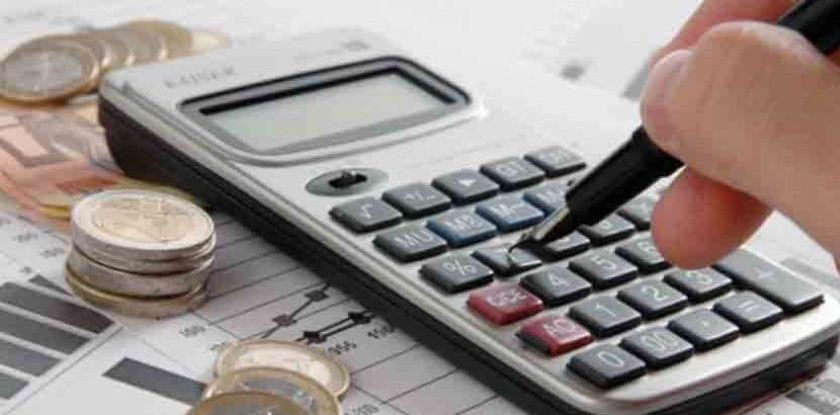Kazakhstan’s Ministry of National Economy has published a press-release in which it outlines some results of the country’s economic development for the past ten months (from January to October 2017). If we are to believe the official data, we can say that the situation in Kazakhstan is improving, and at a rather fast pace, at that. However, is this really the case?
Here is a quote from the press-release.
“In January-October 2017, the short-term economic indicator equaled 105.4% compared to the same period last year.
In January-October 2017, the volume of the investments in the stock capital equaled 6547.6 bln tenge which exceeds last year indicator by 6.5%.
The volume of manufacturing output, in January-October 2107, equaled 18153.7 bln tenge in current prices which is 7.5% higher than last year data. In mining industry and quarry development, the output had increased by 10.2%, in manufacturing industry – by 5.2%, in electrical supply, gas service, and air-conditioning – by 4.8%. In water services, sewage system, waste collection and disposal, the output had decreased by 0.3%.
The volume of output (services) in agriculture equaled 3560,2 in January-October 2017 which is 2.1% higher than last year indicators.
In the transport sector, the volume index equaled 104.7% in January-October 2017. In the communication sector, the volume index equaled 103.2% in January-October 2017. In the trade sector, the volume index equaled 103.2% in January-October 2017.
Kazakhstan’s value of foreign trade, in January-October 2017, equaled $55421.8 mln and grew 25.7% year-on-year which includes: export – $34460.7 mln (31.4% increase), import – $20961.1 mln (17.2% increase).”
According to the Ministry’s data, even the consumer prices in Kazakhstan, for the first ten months of the current year, had grown within the limits of the National Bank’s corridor: “In October 2017, the consumer price index equaled 105.4% compared to December 2016. The food prices had grown by 4.5%, the non-grocery goods prices – by 7.5%, the commercial human services – by 4.6%. The producers’ manufacturing prices, in October 2017, had grown by 11.4% compared to December 2016”.
However, even such a notable growth of the national economy is not likely to please the Kazakhstan authorities. And this is not only because, given in dollars, the dynamics does not look so optimistic. This is not the point. The matter is that Akorda’s primary goal of today lies in preserving the “domestic political stability” in the country while speeding up the economic and social development took a back seat a long time ago.
To preserve the proverbial “stability”, Nursultan Nazarbayev and his closest allies must achieve not only and not so much the significant growth of the economic indicators as the increase of the real income of the population. Only this will enable them to, first, stop the spreading of the protest moods in the society and, then, to lower them to a safe level. But this is exactly the task that, according to the EconMin statistics, the authorities have failed, once again: “The average nominal monetary incomes, as of September 2017, equaled 79391 tenge which is 4.3% higher compared to September 2016. The real monetary incomes had decreased by 2.6% during that period”.
By our estimates, for the protest moods to stop growing, Akorda needs to achieve not just some increase of the real monetary incomes but a really significant one, say 10% a year. This is vitally important for the reasons of the statistical and psychological nature. Since the “real monetary incomes” indicator, de-facto, reflects the “average hospital temperature”, it must grow significantly so that most of the population can feel it. And the task of transforming the mass-scale income growth into the mass-scale change of well-being demands the same.
However, due to the monolithic state nature of the Kazakhstan economy, the financial improvements of the large and medium-size enterprises involved in the raw-material sector and of the state itself are reflected in the rest of the economy and, consequently, in the real incomes of most Kazakhstanis with much delay. By our estimates, the delay consists of two years minimum. Moreover, it is possible that, because of Akorda’s desire to decrease the spending level of the National Fund resources, the current improvement of the affairs in the state, the quasi-state, and the raw-material sectors of the economy may have zero effect on the rest of the country.
In this is true, for the next 10 years, the Kazakhstan authorities will certainly not be able to contain yet another painful development – the escape of the Kazakhstan citizens from the country. Meanwhile, according to the November 15, 2017 data of the Ministry of National Economy, the negative balance of migration, for the period of January-September 2017, equaled 16 205 people.
As for the total population of the country that, as of October 2017, equaled 18.097 mln which includes: urban population – 10.383 mln, rural population – 7.714 mln, and year-on-year increase by 231 thousand (not a substantial one). And the media has repeatedly noted that those who leave are the more qualified, more motivated, more active citizens.
Therefore, because of the emigration, the quality of the Kazakhstan population is decreasing which, on the one hand, automatically lowers the general protest moods among the citizens since the more active and motivated ones are leaving and, on the other, leads to less civilized, organized, and goal-oriented forms of dissent in the future. Therefore, the protests will take place not because the society has ripened but because the people only need a pretext to splash out their anger. And this “splashing” is to be unpredictable and aggressive.




